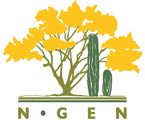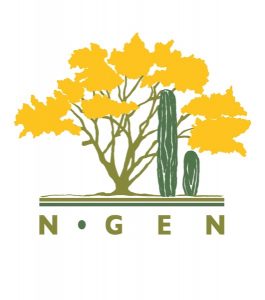B.A. at the University of Buenos Aires, Argentina (1986-1992). Ph.D. at Instituto de Ecología, Universidad Nacional Autónoma de México (2000-2004). Ph.D. Thesis: Ecology of the seed dispersal process by Cebus monkeys in three tropical and subtropical forests of America (Iguazú Argentina, Barro Colorado Island Panama, PN Palo Verde Costa Rica).
In 2005, I moved to Baja California, to do a postdoctoral study at the Biodiversity Research Center of the Californias (BRCC), San Diego Natural History Museum, San Diego, CA, (SDNHM), where I worked with Dr. Exequiel Ezcurra (Univ. California, Riverside, CA and UC-Mexus Program) until 2012, and where much of my work has been based. My research in bajacalifornian deserts focused on investigating the function of critical oasis ecosystems in the peninsula. In particular, I worked with fan palm canyons that constitute Pleistocene relics and nodes of key ecological activities in the Central Desert. I was interested in the effects of animal–plant interactions and the role of water pulses in determining the distribution patterns of plant populations and metacommunities at different spatial and temporal scales. From 2006-2007, I obtained an Alcoa Foundation’s Conservation and Sustainability Fellowship-Award to explore and understand the functioning and ecological dynamics of these oases (Project: ‘Desert oases and sustainability: Understanding the ecological dynamics of critically-endangered wetlands in Baja California’).
From that time to present, I am a Biodiversity and Conservation Advisor at the Valle de los Cirios National Protection Area, Mexican Council of National Protected Areas (CONANP), Baja California, working as a consultant since 2007 until present. At present I am also an associate researcher at the BRCC-San Diego Natural History Museum. From November 2012 to present, I have a position as professor and researcher at the Biodiversity and Conservation Research Center (CIBYC), Autonomous University of Morelos, (UAEM), Cuernavaca, Mexico.
My interest focused on the dynamics and distribution patterns of riparian and wetland vegetation, the interactions between ecosystems-surface water and groundwater in environments with marked environmental variability, and natural and anthropogenic impacts on vegetation due to land use change. I am particularly interested in the integration of knowledge and the application of direct solutions to society and ecosystems. I was the secretary of the International Association of Hydrogeologists, Mexican Chapter from 2014 to date. This resulted from my approach and interest in being able to understand ecosystem functions from an hidrogeological basin perspective. This led to research in a multidisciplinary manner with researchers from social areas, hydrogeology, soil science and ecology.
I have participated in various forums, colloquiums and meetings that sought to recognize the knowledge that exists on groundwater in Mexico and contribute to the construction of awareness and possibilities of problem solutions. I have also collaborated in reviewing the Groundwater Law Initiative that reforms and repeals several provisions of the National Waters Law in Mexico.
At present I am in my sabbatical year in Colombia. I study the seed dispersal functions of rivers (Rancheria and Cesar river) and biodiversity alteration, in La Guajira and Cesar region, a riverine system under several anthropogenic influences (dam, intensive oil-palm cutlivation, and carbon mine).
|


